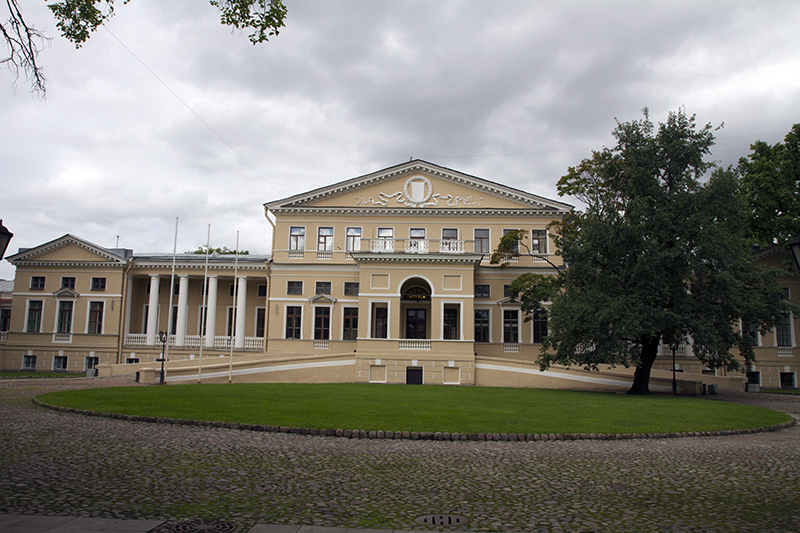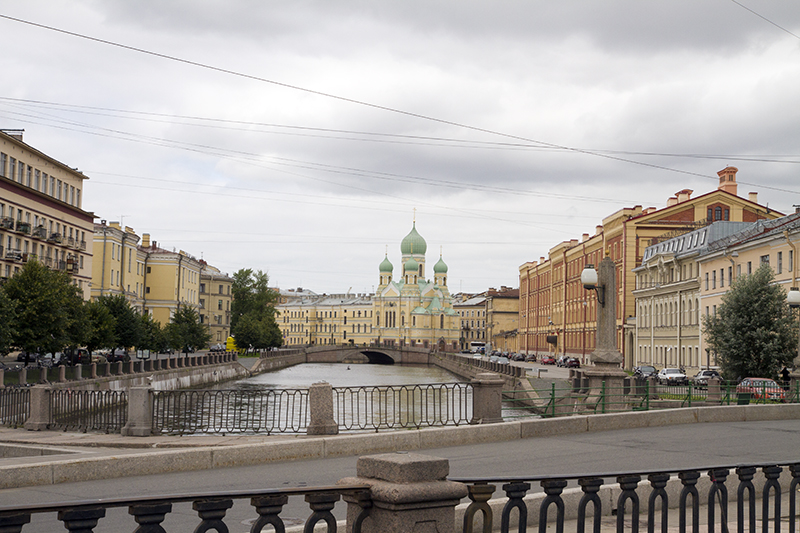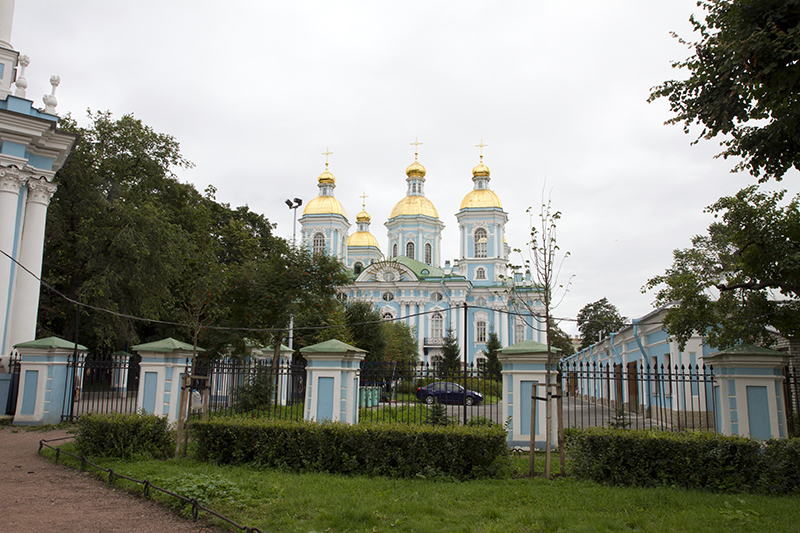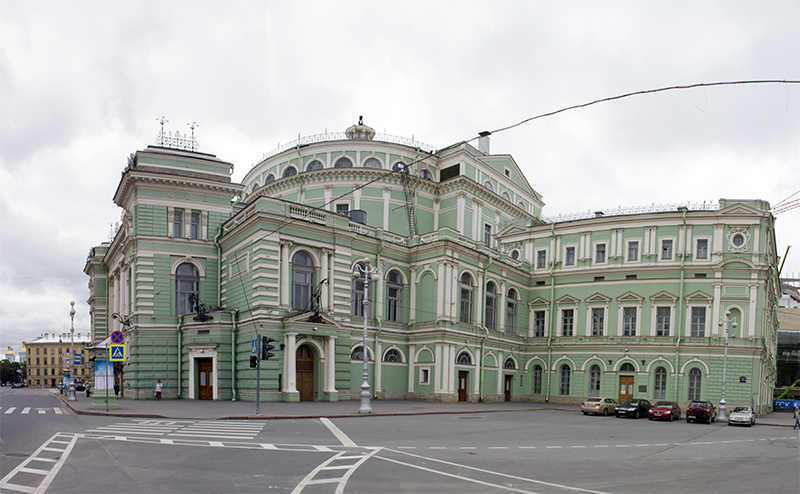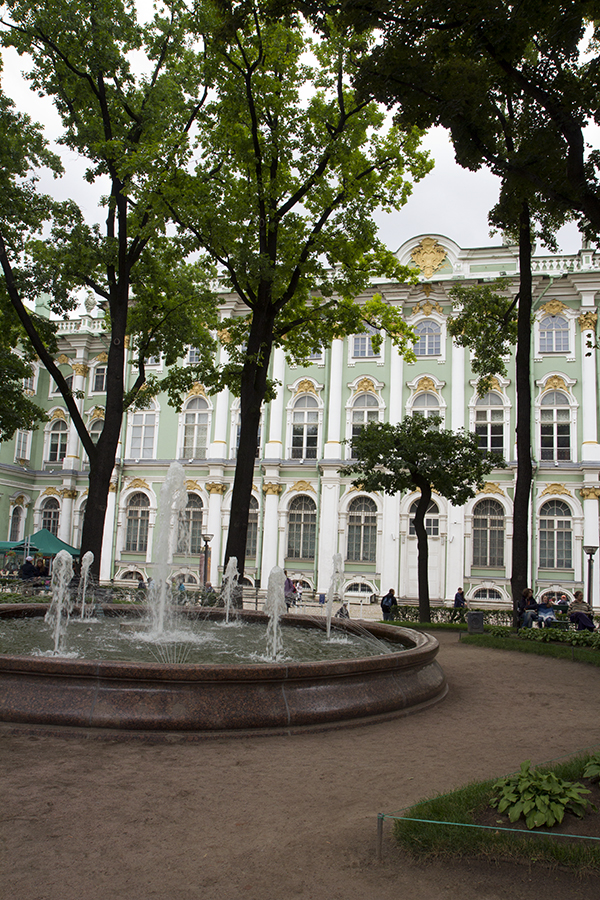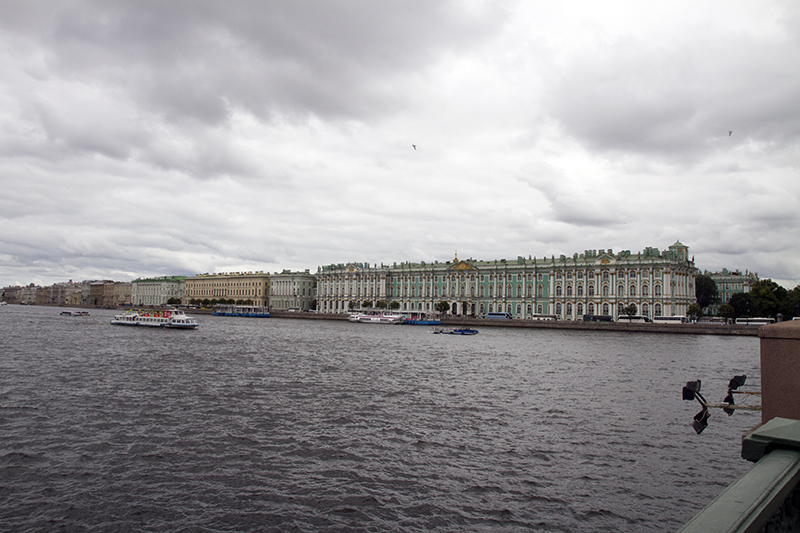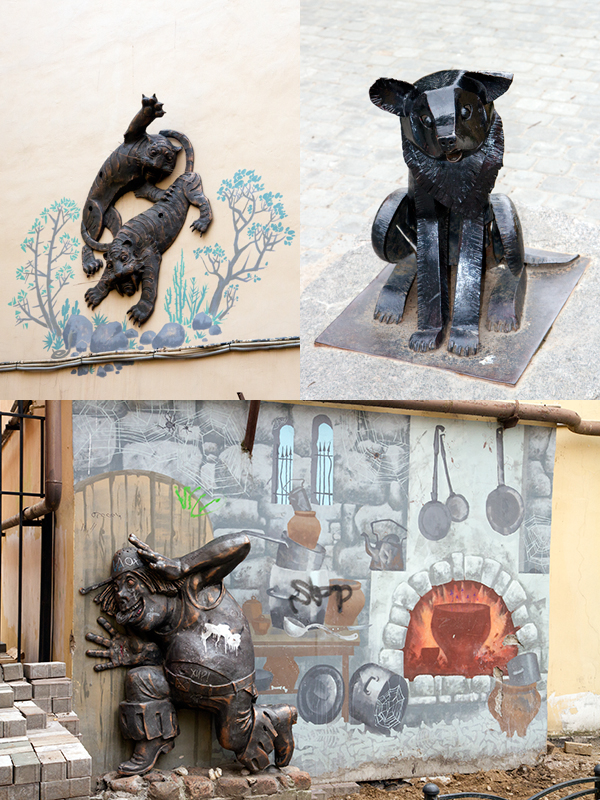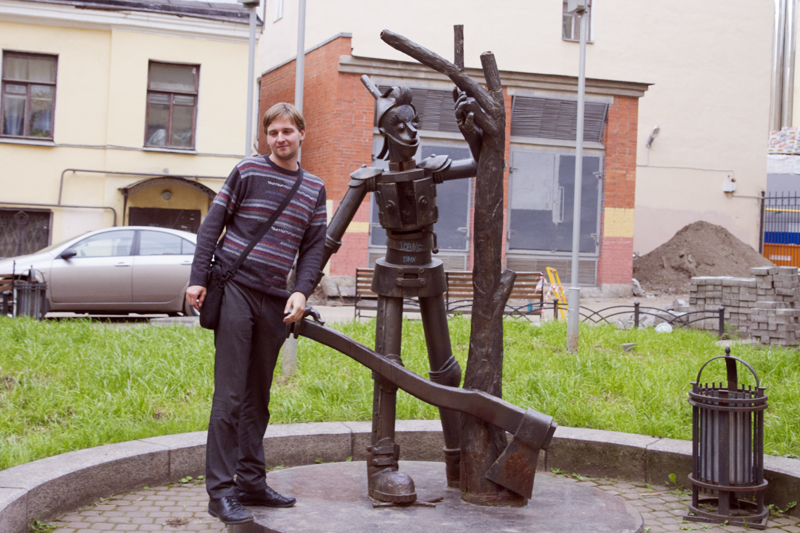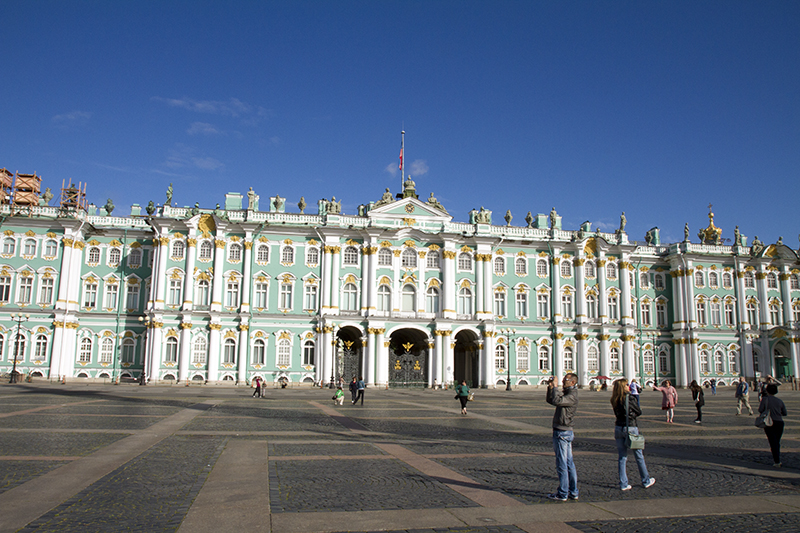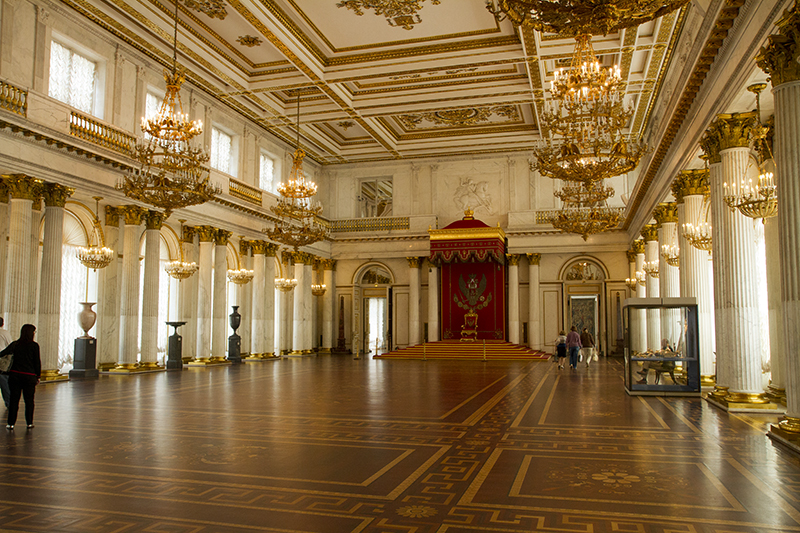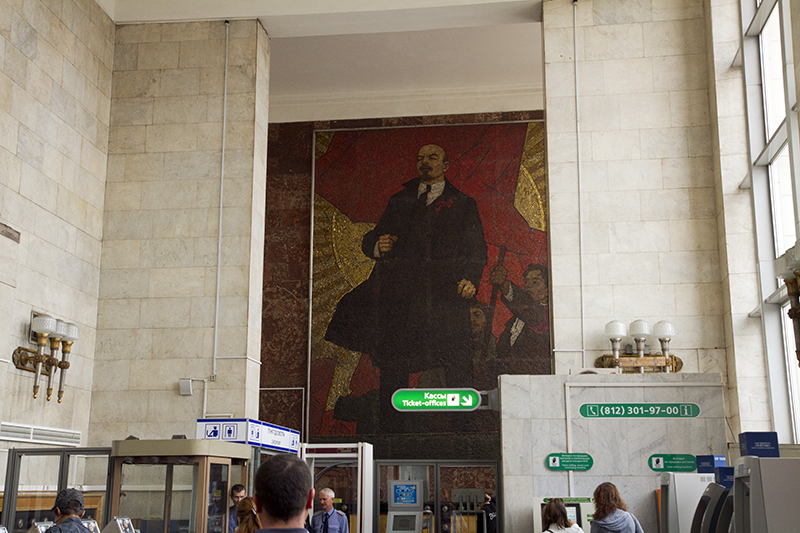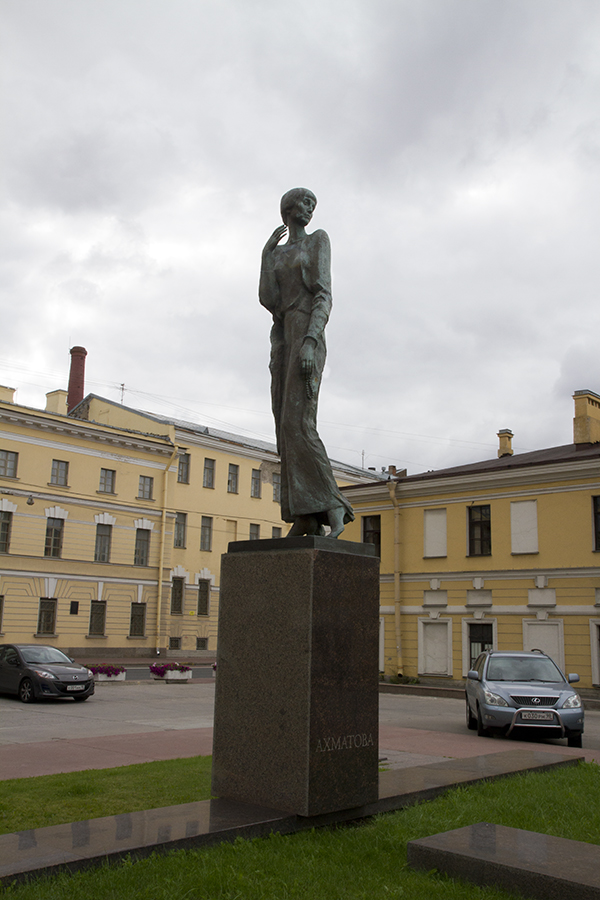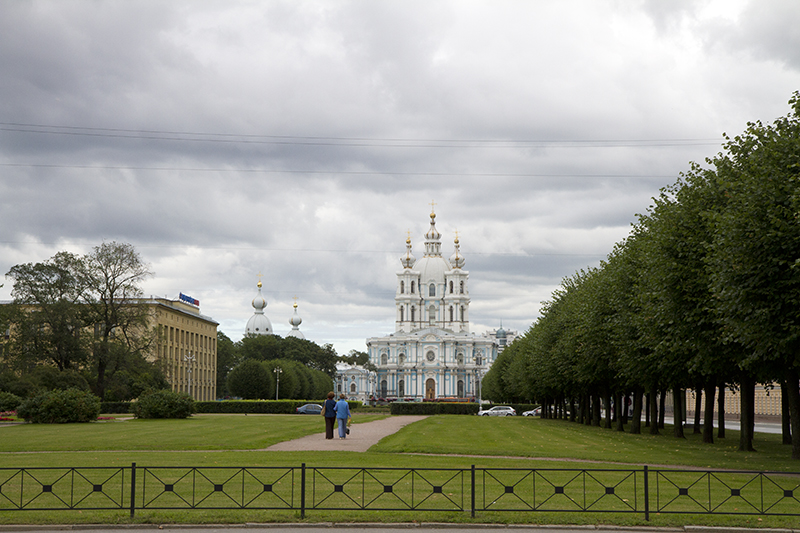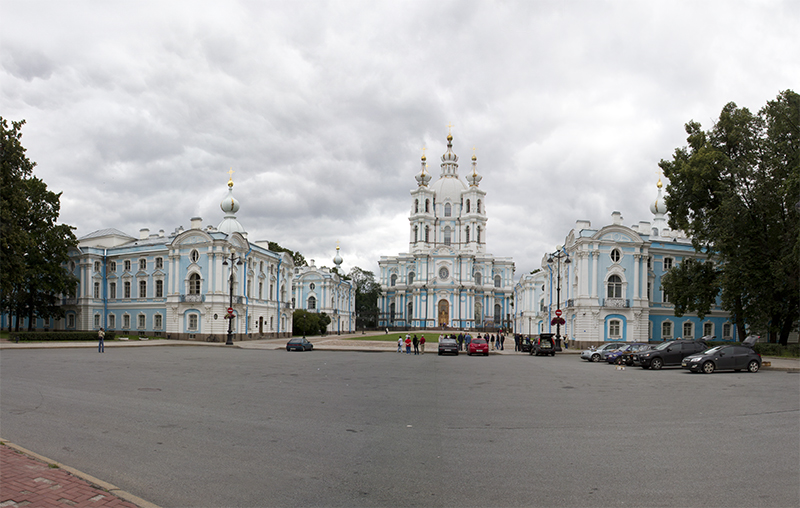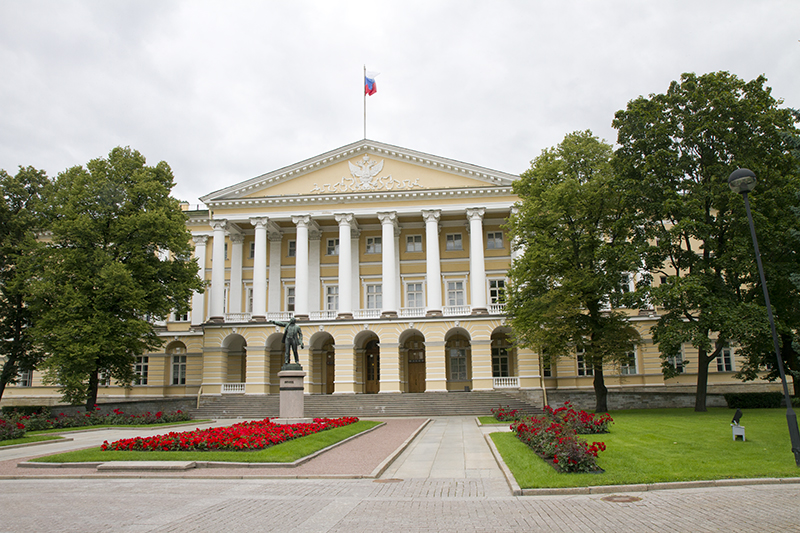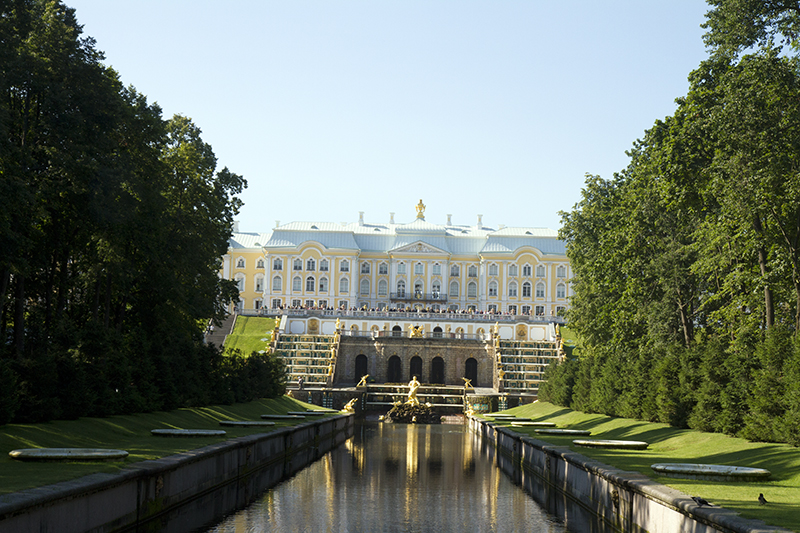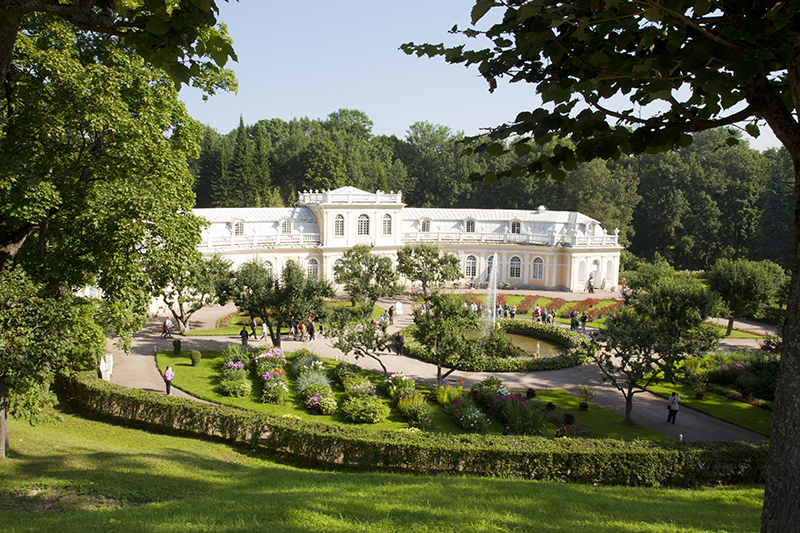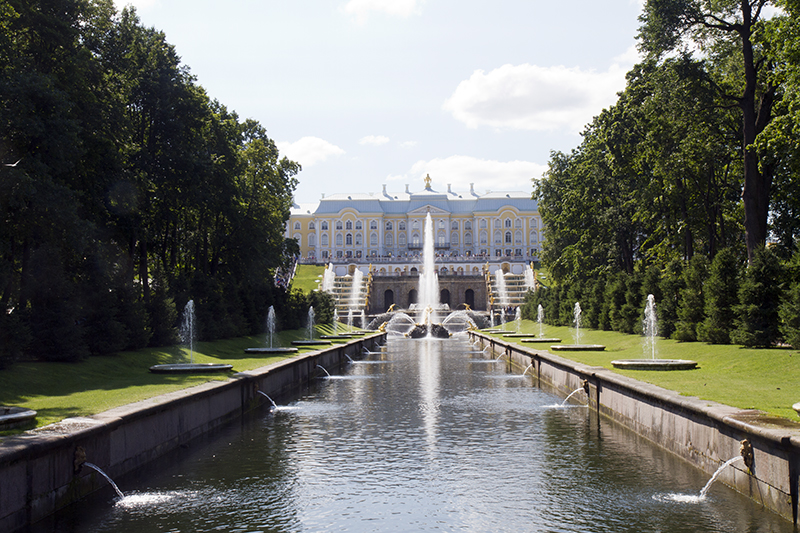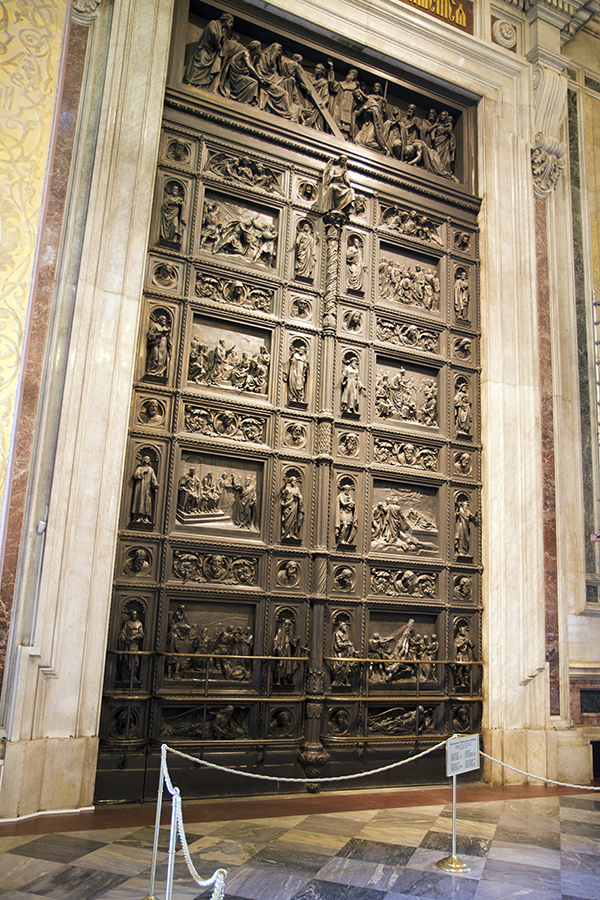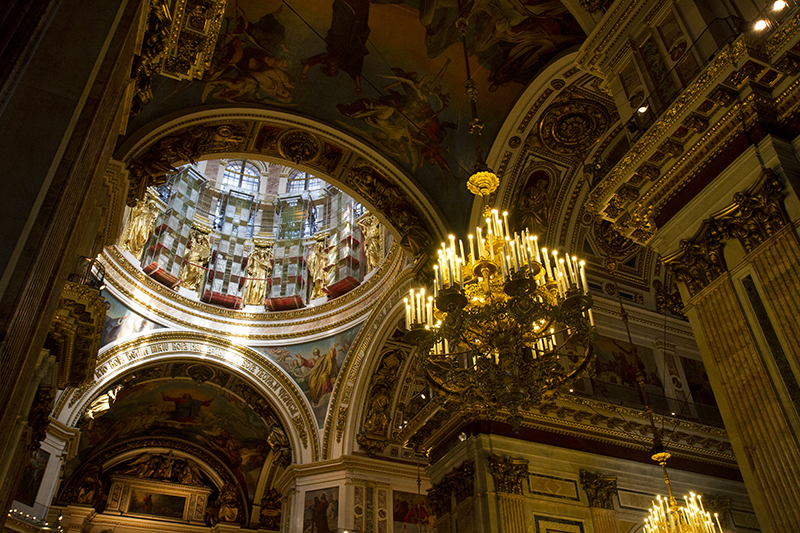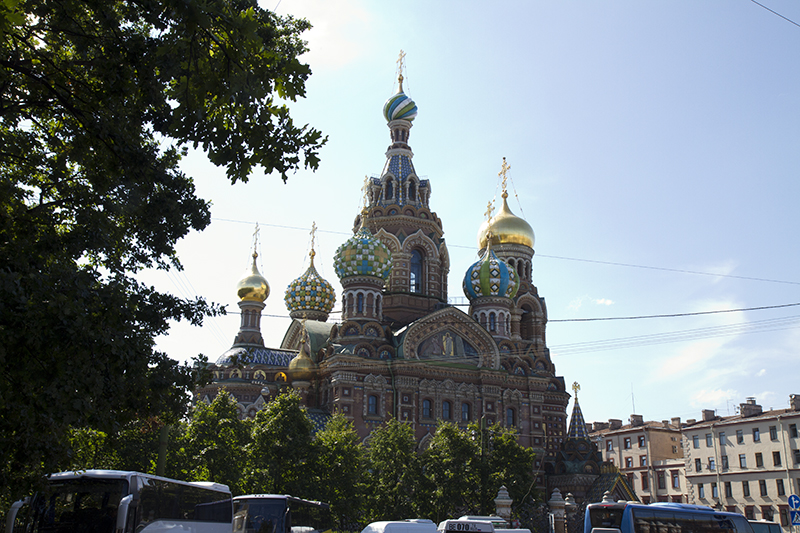In August Bee and I spent a long week-end in Saint Petersburg, Russia. This is a place I had heard a lot about and it was several years that I wanted to come here. I just needed a good excuse.
On the first day we had organised a walking tour of the city, very useful to get orientation and see where the major attractions are.
We started along one of the many canals, the canal which formed the original city limits called Fontanka as it originally fed fountains in the Summer Gardens. Along the way, we ran into the current main building of the Saint Petersburg University.
Impressive building – it used to be one of the many palaces belonging to people who gravitated around the Tsar and his family.
Further along, we noticed this Church with sky blue dome and golden stars
There are churches and canals everywhere. This place is called “three bridges”.
This is Nikolsky Cathedral, actually built for Peter’s wife Empress Catherine I – the bell tower is well removed from the main building as is typical in Russia.
Here is the church itself, with typical pastel colors and gold domes
This is the Mariinsky Theatre, probably the best known cultural venue in Saint Petersburg where the Kirov ballet used to perform in Soviet times – now it has reverted to its original name and is known as the Mariinsky Ballet Company, still one of the best in the world.
The main gate into the old shipyard called New Holland. Tsar Peter the Great went under cover to work in the shipyards of Holland to learn their ship building techniques and came back to Saint Petersburg to found the shipyard here – now it is a park with craft center called Novaya Gollandya.
After the walk we went exploring the Historic Centre and especially the area around the Hermitage Museum to scope out what we needed to do the next day to get in and avoid the crowds. this is the main square in front of the Hermitage, called Revolutionary Square in Soviet times, but now just called Dvortsovaya Place. On a later walk, we found out that during the October Revolution, there was no storming of the Palace throughout the square. The Palace was un defended and just a few revolutionary guards invaded the place to force the surrender of the White Russian government which was holding a meeting in the small White Dining room.
Monumental entrance into the square through the general staff building.
There are traditional carriages in front of the palace, just like the old days. For a small fee, they will drive you around like royalty.
The main courtyard is peaceful and quiet in late afternoon but there are a lot of people still waiting to get in. Fortunately, we have pre-booked our tickets and can collect them in the morning, at opening time without a long wait.
The back side of the Hermitage facing the Neva river is just as impressive.
There is an apartment building with a “Wizard of Oz” theme in the courtyard. We discovered this on our “Unusual St. Petersburg” walk that evening.
There is even a Tin Man, without a heart. Our guide is on the left!
Here is the institute that designed all Soviet Submarines – at the top is their first design. On the same scale, the latest design is at the bottom! After this, we were supposed to go to the bar frequented by Soviet Air Aces (there are ejection seats by the entrance) to try honey beer, a local speciality. However, the tap was dry, so our guided invited us for another Russian tradition: Vodka and pickled cucumbers, in a park, something that is not totally licit. We spent about one hour drinking, eating, and talking about his experience before and after the fall of the Soviet rule.
The subway is a good way to showcase Soviet and Russian culture. There are murals of the major victories – here against Napoleon!
The next day was a beautiful day. Here is the entrance to Hermitage in the sunshine. We arrived a half hour before opening time and there was already a long line, but only for those needing to buy tickets. Those with tickets had a shorter line, and we were able to go in immediately at the opening.
We started with the ceremonial rooms. Here is the Small Throne room, for intimate gatherings
Formal throne room – for larger gatherings
There are Intricate inlaid parquet floors in nearly every room. This one was particularly impressive one with wood of three different colours. We also looked at Flemish and Dutch Masters paintings. They have an unbelievable collection! After a couple of hours, the crowd became too much, and we escaped to have lunch.
In the afternoon, we had booked an October Revolution Walk with Piotr, also known as Peter of Peter’s walks. We started in front of the Hermitage where Peter explained about the lack of storming of the Winter Palace. We then went to the Finlandya Station, where Lenin arrived by train in mid 1917. This mosaic is a tribute to Lenin addressing the crowd in 1917 after his arrival.
He did this in front of the Finland Station, standing on top of an armoured truck.
From there, we walked in the footsteps of Lenin, on the day before the October Revolution, at great danger to himself as he was persona non grata, especially to the White Russians who controlled this part of the city.
In front of the old jail, across the river, there is a statue to one of the greatest Soviet poets, whose husband had been imprisoned in the jail. She campaigned for years to get him released, without success.
We walked towards Smolny Cathedral, designed by Francesco Bartolomeo Rastrelli, famous Italian-born architect who worked many years in Tsarist Russia. He developed the distinctive Baroque style of many buildings in Saint Petersburg.
Closer looks even better. The buildings around the Cathedral are what is left of the original convent.
Next to the Cathedral is the Smolny Institute. It was the Communist Party headquarter in October 1917 and here that Lenin came to finalise the plans for the Revolution. He lived here several months afterwards in order to organise the state and the new government.
On Monday, we went to Peterhof, tsar Peter the Great home away from home across the bay from St Petersburg. We arrived early and were disappointed to notice that the fountains appeared not to be functioning.
In front of the palace, where the most spectacular fountains are located, a crowd had gathered, we suspected in anticipation for something we did not know about. So we waited with them.
Something did happen. At 11:00 precisely, music started to play, and the fountains were turned on. Here is a video I took at that time.
That, of course, completely changed the whole scene.
We knew the palace would be closed, but the gardens are well worth it with fountains and interesting buildings everywhere. Here is a general view of the fountains in front of the main palace.
This is the Orangerie, where we had lunch. A little corner of peace and quiet, even as the crowds were still building.
A lot of effort went into the design of fountains, even some to entertain the people enjoying a walk in the garden. On the left, a fountain in the shape of a tree and several tulips. Next to this there were fountains operated by pressure contacts, catching unsuspecting tourists! On the right, a rotating fountain which created interesting rainbows in the early sunshine.
Here is a view of the main palace, with working fountains. Again, very different from the view as we came in.
Further there are formal gardens and more fountains. Here is a view from the dike by the bay.
Here is a general view of St Petersburg from the shore of Peterhof. This is somewhat removed from the Historic Center of the city, but there are a few buildings visible even in the haze (such as St Isaac’s Cathedral with the gold dome next to the three tall chimneys on the right of the photo). In the foreground are several of the Hydrofoils (rather old technology, but still nice) which we used to come here and return to the city – the best and fastest way to go back and forth.
Speaking of St Isaac, we went there next. It is now a museum as it was decommissioned during Soviet times, however, it has kept a lot of its artistic treasures. The doors are quite nice.
On the inside, the dome is quite spectacular as well. Every inch of the place is decorated, with gold highlights and statues large and small. The effect is spectacular even if a little too much at times.
Last on our itinerary was the “Church of the Saviour on Spilled Blood”, officially the Church if the Resurrection, built on the very spot where Alexander II was blown up by the People’s Will terrorist group in 1881.
In Russian Orthodox churches, the altar is separated from the congregation by an elaborate screen that often includes icons and images of saints and historical figures, often including the person who sponsored the construction of the church.
A final view of the church from the side of the canal. The church had to straddle a portion of the canal in order to incorporate the exact spot where Tsar Alexander II was killed; you can see that the canal gets narrower right at the church.
We had a very good time in Saint Petersburg, but we probably could have used a few more days to see more of this wonderful city.
(4411 Page Views)

